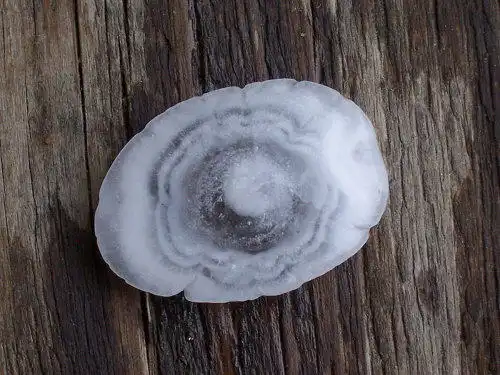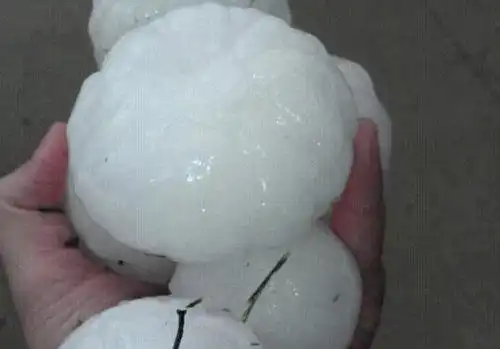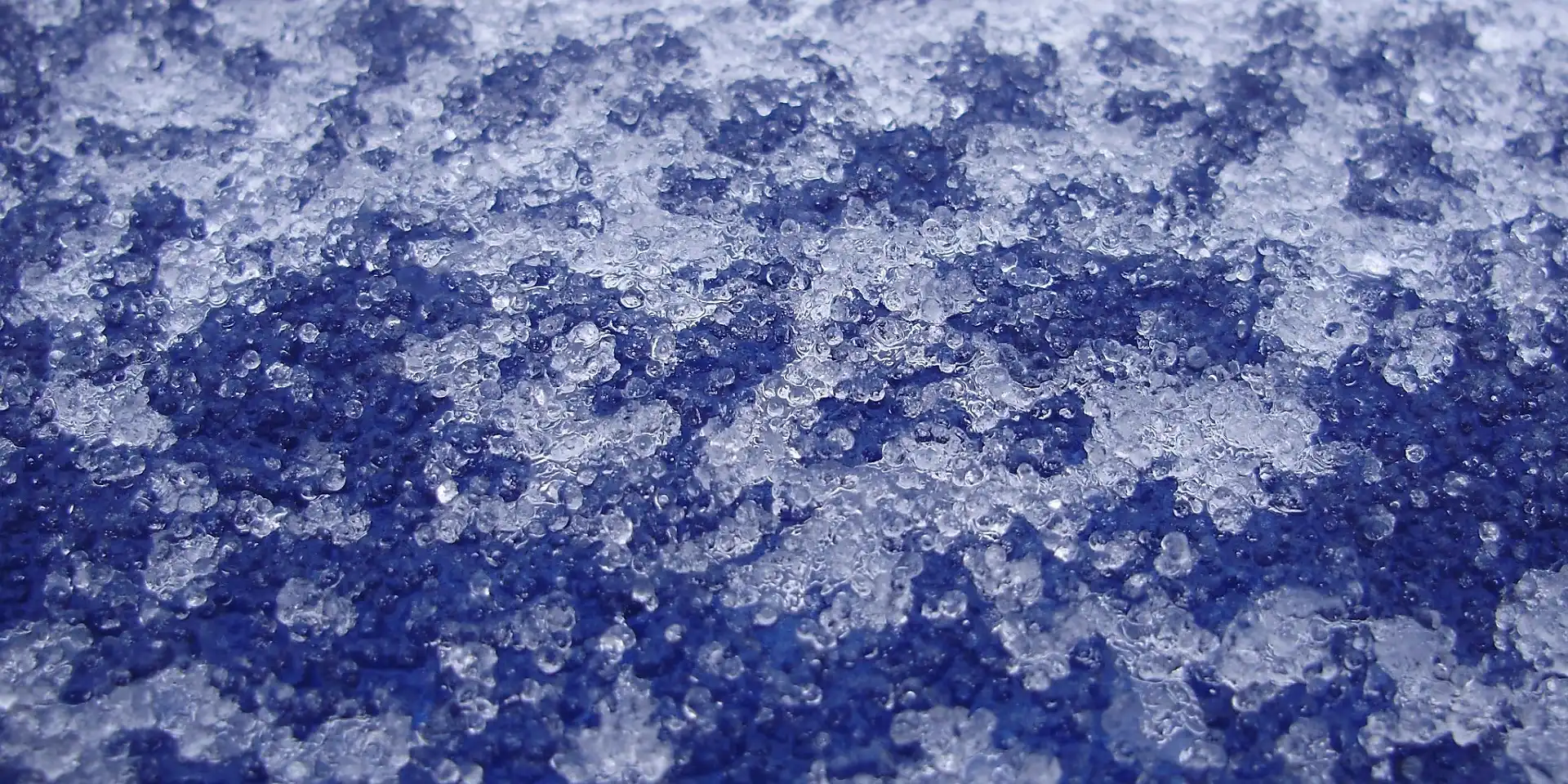Precipitation Types
Hail
Hail is solid precipitation in the form of ice. They form when water droplets are carried upwards by strong updraughts within Thunder clouds. The droplets freeze and then fall back down colliding with other rain droplets. They are then carried back up within the cloud and another layer is formed. The process continues until the Hail is too heavy too stay aloft and they then fall to the ground. If you cut open a hail stone it will reveal an onion like structure reflecting the number of occasions the hail stone has been carried up and down the cloud. The longer the Hail stone is carried in a cloud the bigger it will get. The size varies from 5mm to 150mm in size. Large hailstones can also do a lot of damage. Hail falls mainly in the warmer months of the year although it can fall in Winter if the conditions are favourable it’s more likely to be Graupel than anything else.


Ice Pellets
Ice pellets form when Snow flakes start to melt as they fall through the air. They then pass through a sub-freezing layer when re-freeze into grain like particles. In some cases the Snow doesn’t completely melt and becomes encased in ice.
Smaller than Hail they bounce when the hit the ground and can form a brief covering if the shower is heavy enough.
The picture below shows Ice pellets and Glaze
